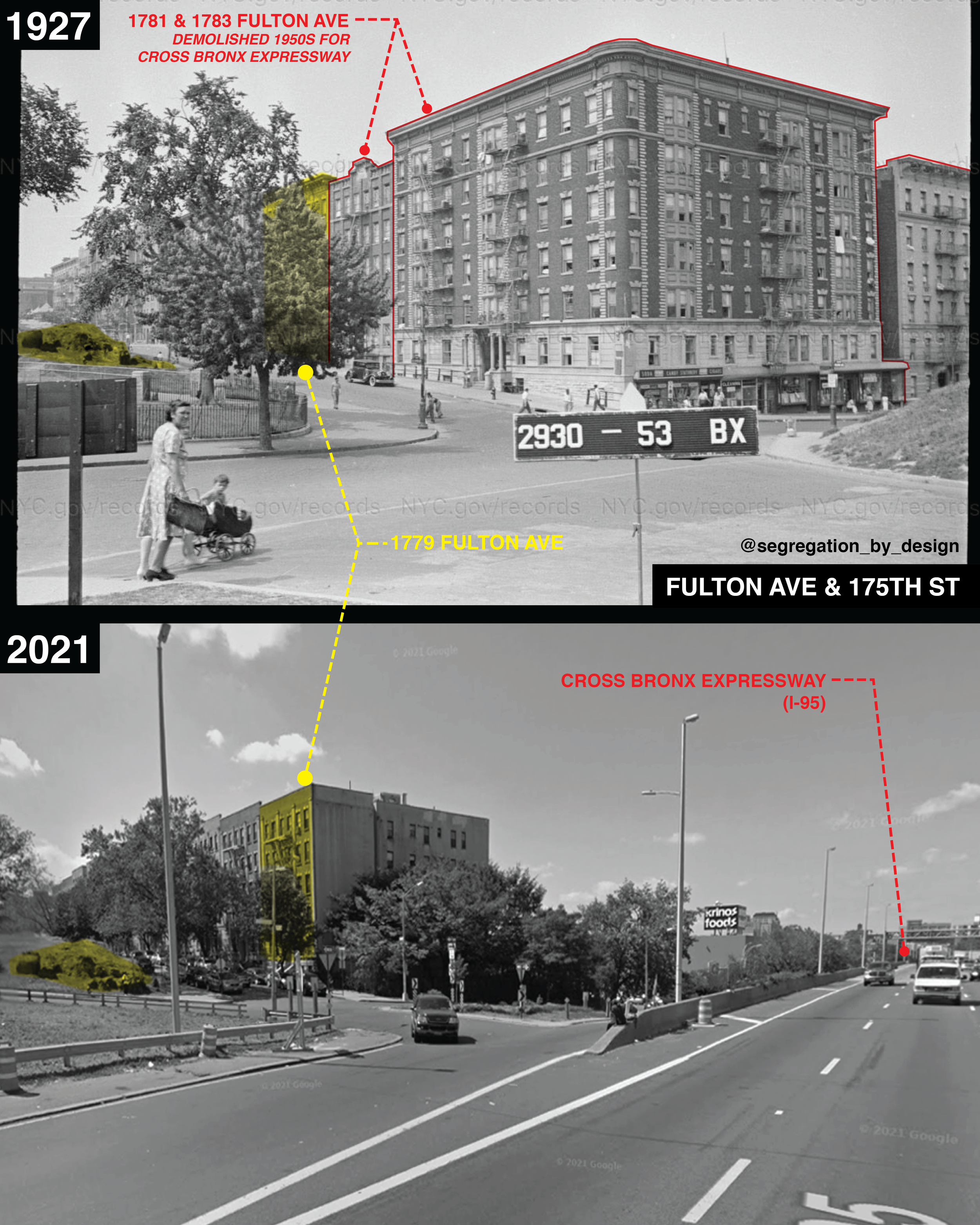THE BRONX: THE CROSS BRONX EXPRESSWAY
The story of the fall and rebirth of The Bronx begins with the Cross Bronx Expressway. Indeed, the stories of many of the freeways covered thus far also begin with the Cross Bronx. With construction starting in 1948, this stretch of highway was one of the first large-scale urban freeways built in the US. It was also the most complicated to construct, the most disruptive in terms of people displaced, and contained the most expensive mile of road ever constructed on the earth. Designed by Robert Moses, the Cross Bronx subsequently served as a model for cities across the US, which were designing their own urban freeway systems (and which, after the Interstate Highway Act of 1956, were looking to cash in on the whopping 90% federal matching funds for highway construction)(1).
In his biography of Moses, “The Power Broker,” Robert Caro notes “The great roads of antiquity—the 1,500-mile Royal Road of Persia, the Silk Roads, the Highways of Rome—were built through open country… [The Cross Bronx] was like no other road in history, for it was built through a city.” “Disemboweling a dozen communities along the route,” construction of the highway required the demolition of thousands of apartments in hundreds of buildings in a seven mile swath across The Bronx (2). Between 40,000-60,000 were directly displaced by the construction of the Cross Bronx (3)(4).
Before the highway, the neighborhoods through which Moses would build the Cross Bronx were among the most racially integrated in the country, with large populations of Jewish immigrants from Eastern Europe, Irish and Italian Immigrants, (and after WWII) Puerto Ricans, and African-Americans (5). After the highway tore through, property values plummeted. White residents fled (lured to the suburbs by government-backed mortgages), while black and brown residents remained (oftentimes with few other options due to red-lining and racist housing policies). As covered in the documentary, Decade of Fire, subsequent disinvestment in services from the city led The Bronx to burn in the 70s and 80s, destroying roughly 80% of housing stock and displacing another 250,000 (6).
Endnotes
Caro, Robert. The Power Broker: Robert Moses and the Fall of New York. Knopf, 1974. Pg. 837.
Caro, 837.
Syedda, Qudsiya. “A Split City: The Destruction of the South Bronx.” Environmental Justice History in America. https://ejhistory.com/cross-bronx-expressway/
Ryan, Allyson. “The Legacy of Robert Moses.” Fordham Political Review, 2018.
Caro, 857.
Decade of Fire. Dir. Vivian Vazquez, 2018.

